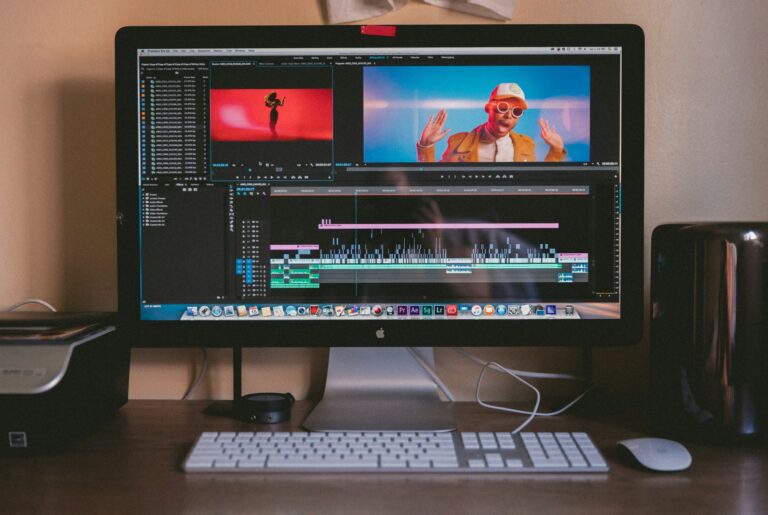Color is one of the most powerful tools in visual communication. It influences emotions, perceptions, and actions, making it a crucial element in both branding and video thumbnails. Understanding the psychology behind color choices can help content creators design thumbnails that attract clicks and establish a strong brand identity that resonates with their audience.
How Color Influences Viewer Behavior
Studies show that color can impact decision-making in as little as 90 seconds. In the context of YouTube thumbnails or social media branding, the right color choices can draw attention, evoke curiosity, and create an immediate emotional response. This is why successful creators and brands use color psychology strategically to optimize engagement and recognition.
Warm colors like red, orange, and yellow often trigger urgency, excitement, and energy. Cool colors such as blue and green evoke trust, calmness, and professionalism.
The Role of Color in YouTube Thumbnails
Thumbnails act as a visual hook, influencing whether a viewer clicks on a video. Here’s how different colors can affect engagement:
- Red: Associated with urgency, passion, and high energy, red can create a sense of excitement. Many successful creators use red in call-to-action elements or text to grab attention.
- Yellow: Represents optimism, happiness, and enthusiasm. Bright yellow thumbnails often stand out against YouTube’s white or dark mode backgrounds, increasing visibility.
- Blue: Conveys trust, stability, and professionalism. Blue is often used by educational or tech-related content creators to establish credibility.
- Green: Symbolizes growth, freshness, and relaxation. Green works well for financial, nature, or health-related content.
- Purple: Evokes creativity, luxury, and mystery. It’s commonly used in gaming or artistic content to create a sense of exclusivity.
- Black & White: Exudes sophistication, elegance, and contrast. High-contrast black and white thumbnails can create a bold, cinematic feel that stands out.
Successful YouTubers often use a combination of colors to create contrast, ensuring their thumbnails remain eye-catching even when displayed among dozens of other videos.
Both matter, but an attention-grabbing thumbnail will make people click to watch your video. As long as you’re using a decent camera and microphone, a well designed thumbnail will increase the chances of your content being viewed.
Color Psychology in Branding
Beyond thumbnails, color plays a fundamental role in branding. A consistent color palette helps build brand recognition and conveys specific messages about a company or creator’s identity. Here’s what different colors communicate in branding:
- Red (Coca-Cola, YouTube, Netflix): Bold, energetic, and attention-grabbing. Often used to evoke excitement and urgency.
- Blue (Facebook, Twitter, LinkedIn): Trustworthy, calming, and corporate. Blue is widely used in social media and tech branding to establish reliability.
- Yellow (McDonald’s, Snapchat, Ikea): Cheerful, optimistic, and youthful. Brands targeting a younger audience often incorporate yellow.
- Green (Starbucks, Whole Foods, Spotify): Growth, health, and sustainability. Green is effective for brands in wellness, nature, or finance sectors.
- Black & White (Apple, Nike, Chanel): Sleek, modern, and high-end. These colors convey luxury and simplicity.
Consistency is key in branding. Using a specific set of colors across all platforms (thumbnails, logos, websites, and marketing materials) helps build trust and makes the brand instantly recognizable.
Practical Tips for Using Color in Your Content
- Use Contrast to Stand Out – Bright colors against dark backgrounds (or vice versa) increase readability and make elements pop.
- Align Colors with Your Brand Identity – Choose colors that reflect your content’s personality and message.
- Consider Cultural Associations – Colors have different meanings across cultures; ensure your choices align with your global audience.
- Test and Optimize – Experiment with different color combinations in thumbnails and branding materials to see what resonates best with your audience.
Conclusion
Color psychology isn’t just about aesthetics—it’s a hidden force shaping audience behavior and perception. When used with intention, it can be the difference between content that blends into the background and visuals that command attention.
The right color combinations, applied consistently, can transform ordinary visuals into compelling storytelling tools that leave a lasting impression.
As you experiment with your own branding and content design, think beyond simple color preferences—consider what feelings and responses you want to provoke in your audience.






